Dinosaurs, those magnificent rulers of prehistoric Earth, have captivated our imagination for centuries. While we’ve gained considerable knowledge about their anatomy, diversity, and evolution, how these creatures actually behaved—particularly how they hunted—has largely remained a mystery. Recent discoveries of fossilized tracks, however, are revolutionizing our understanding of dinosaur hunting strategies. These preserved footprints provide rare glimpses into dynamic moments frozen in time, offering paleontologists unprecedented insights into predator-prey relationships that existed millions of years ago. Unlike skeletal remains, tracks capture behavior in action, revealing hunting techniques that range from solitary ambushes to coordinated pack hunts that rival the sophistication of modern predators.
The Fossil Track Revolution

Fossilized footprints, technically known as ichnofossils, have emerged as crucial evidence in understanding dinosaur behavior. Unlike body fossils that preserve bones, tracks capture moments of action—actual behaviors frozen in time. The preservation of these tracks requires specific conditions: dinosaurs walking through mud or soft sediment that quickly hardened before being covered by protective layers. Recent technological advances have enabled paleontologists to analyze these tracks with unprecedented detail, revealing stride length, weight distribution, and even acceleration patterns. What makes these discoveries particularly valuable is that they often preserve interactions between multiple individuals, allowing scientists to reconstruct complex hunting scenarios that would be impossible to deduce from skeletal remains alone.
Theropod Hunting Strategies Revealed
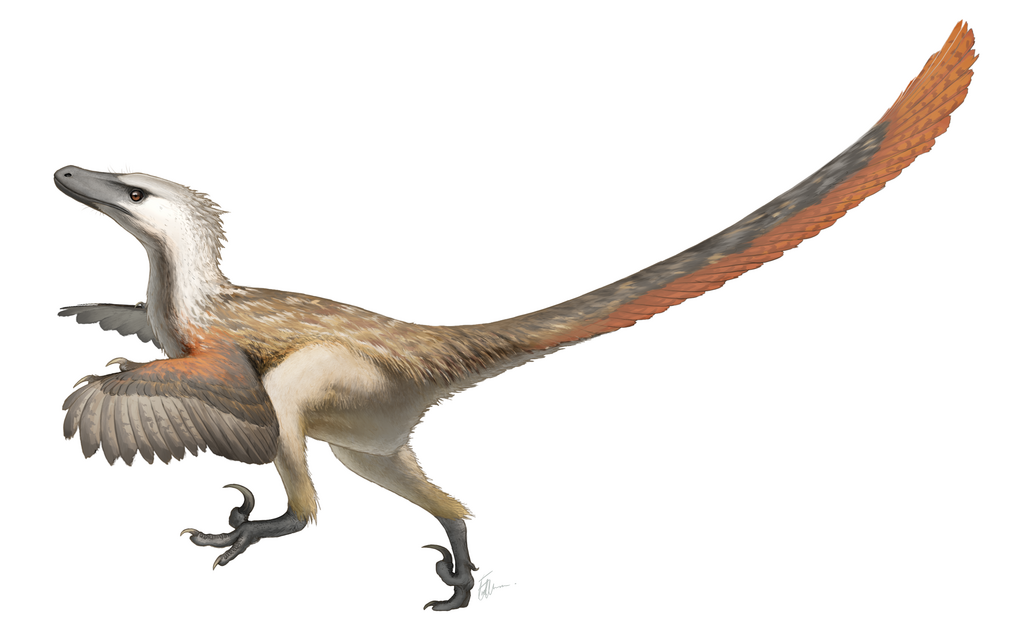
Theropods, the group of predominantly carnivorous dinosaurs that includes Tyrannosaurus rex and Velociraptor, have left particularly informative hunting tracks. Recent discoveries in Colorado and New Mexico have revealed sequences of footprints showing theropods stalking potential prey, with tracks indicating careful positioning and strategic approaches. The spacing and depth of these prints suggest calculated acceleration at crucial moments—a behavior seen in modern ambush predators. Particularly telling are instances where prints suddenly deepen and widen, indicating a burst of speed as the predator launched its attack. Some tracks even show drag marks from the middle toe, suggesting the dinosaur was leaning forward in anticipation of a strike, similar to how big cats position themselves before pouncing.
Evidence of Pack Hunting in Dromaeosaurs
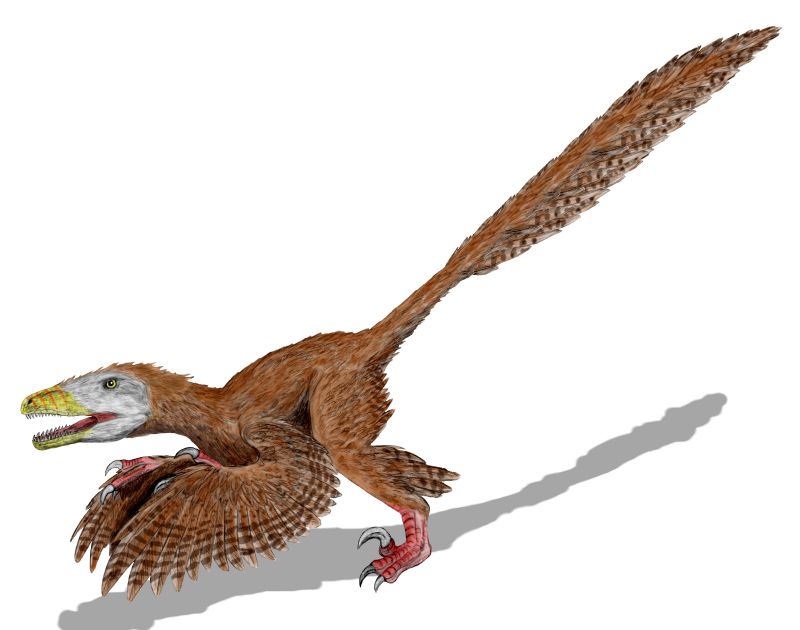
Perhaps the most striking revelation from fossilized tracks is evidence of coordinated pack hunting among dromaeosaurs—the family that includes Velociraptor and Deinonychus. Multiple trackways discovered in China and North America show groups of similar-sized dromaeosaur prints moving in coordinated patterns around larger herbivore tracks. The positioning of these tracks suggests sophisticated hunting strategies: some individuals appear to have been driving prey while others positioned themselves for ambush. This evidence directly challenges the long-held view that dinosaurs were solitary or simplistic in their hunting behaviors. Analysis of track spacing indicates these animals maintained consistent distances from each other during pursuit, suggesting communication and coordination rather than opportunistic gathering. This discovery has forced paleontologists to reconsider the social intelligence of these predators, drawing parallels to modern wolf packs or hunting lions.
Ambush Predation: The Waiting Game

Fossilized tracks have revealed compelling evidence that some dinosaurs were ambush predators rather than pursuit hunters. Particularly telling are discoveries from the Late Cretaceous period showing large theropod tracks in positions that suggest hiding or waiting near areas where herbivore tracks converge—likely ancient game trails or watering holes. The orientation of these prints indicates the predator remained stationary for extended periods before making sudden movements. In several remarkable cases from the Morrison Formation, scientists have identified what appear to be disguised waiting positions, where large theropods positioned themselves near natural bottlenecks in the landscape. The subsequent chaotic pattern of both predator and prey tracks tells a dramatic story of surprise attacks unfolding in real time millions of years ago. These findings align with the anatomy of certain theropods, which had powerful hind limbs built for explosive acceleration rather than sustained pursuit.
Tracking Speed and Acceleration

Mathematical analysis of fossilized trackways has enabled scientists to calculate the running speeds and acceleration capabilities of hunting dinosaurs with remarkable precision. By measuring stride length, foot size, and the distance between prints, paleontologists can apply biomechanical formulas to determine how fast a dinosaur was moving when it created the tracks. Recent studies of theropod trackways in Utah have revealed that medium-sized predators like Allosaurus could accelerate from a walking pace to approximately 30 mph within just a few strides—comparable to modern cheetahs. The depth and deformation of footprints also provide clues about acceleration forces, as prints become deeper and show more pronounced “heel strike” patterns during rapid acceleration. These calculations have fundamentally changed our understanding of dinosaur hunting dynamics, suggesting many predators relied on short, explosive bursts of speed rather than long-distance pursuit—a hunting style similar to modern big cats.
The Role of Body Size in Hunting Methods
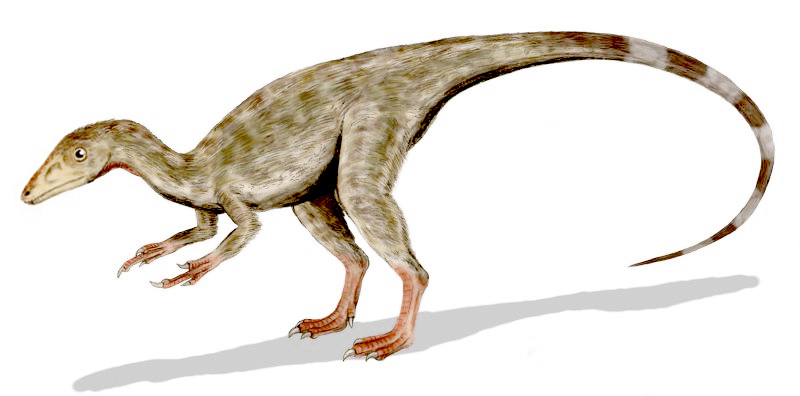
Track evidence has revealed fascinating correlations between dinosaur size and hunting strategy. Tracks from smaller theropods like Coelophysis and Compsognathus show patterns consistent with agile, rapid pursuit of small prey, with tight turning radiuses and sustained running speeds. Medium-sized predators like Allosaurus left tracks suggesting a blend of ambush and short pursuits, taking advantage of both stealth and speed. The truly massive predators, however, tell a different story through their tracks. Footprints from giants like Tyrannosaurus and Giganotosaurus reveal relatively straight-line movements without the quick turns seen in smaller predators, supporting theories that these apex predators relied more on overwhelming power than agility. Particularly revealing are instances where large theropod tracks intersect with herbivore trackways at walking speeds, suggesting these giants may have adopted intimidation tactics—walking directly toward prey—rather than attempting to outrun them.
Hunting on Different Terrains

Dinosaur hunting tracks preserved across various environments have revealed how these predators adapted their strategies to different terrains. Trackways discovered in ancient mudflats and coastal regions show predators taking advantage of difficult terrain, with evidence of theropods positioning themselves where prey animals would struggle with traction. Particularly telling are sequences from the Cretaceous of Korea, where predator tracks show careful, deliberate movements across soft sediment while herbivore tracks in the same area show signs of slipping and irregular spacing—suggesting predators were exploiting the challenging terrain to their advantage. In contrast, tracks preserved in what was once open plains show different patterns, with evidence of longer pursuits and more reliance on stamina. These terrain-specific adaptations reveal a sophisticated level of hunting intelligence, with dinosaurs apparently recognizing and exploiting environmental advantages just as modern predators do.
Juvenile Hunting Behaviors

One of the most remarkable recent discoveries in dinosaur track research has been the identification of juvenile hunting patterns. Trackways attributed to young predators show fascinating differences from adult hunting strategies, giving us rare glimpses into dinosaur development. Juvenile theropod tracks from the Early Cretaceous of Spain show evidence of what appears to be practice hunting behavior, with young predators making multiple, uncoordinated approaches toward smaller prey. These tracks often show excessive energy expenditure—rapid changes in direction and speed that would be inefficient for experienced hunters. Comparisons between juvenile and adult tracks at the same sites reveal a progression toward more energy-efficient stalking patterns as the animals matured. This evidence suggests that hunting skills in dinosaurs were not entirely instinctual but involved a learning component, similar to how young lions or wolves today must develop their hunting abilities through practice and possibly parental example.
Failed Hunts Preserved in Stone
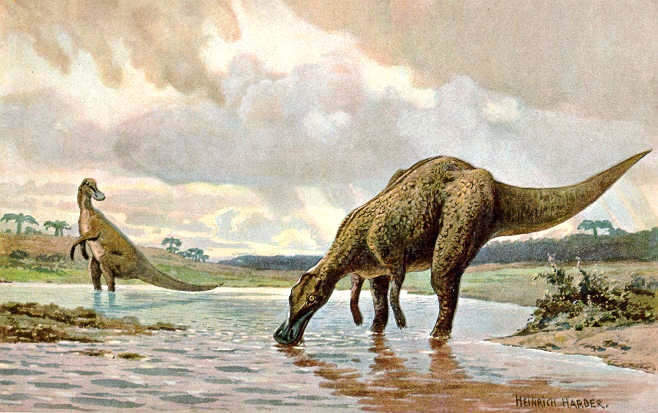
Perhaps the most dramatic track evidence comes from preserved instances of unsuccessful hunts, offering rare glimpses of predator-prey dynamics in action. Several remarkable trackway sequences discovered in Texas and New Mexico reveal the complete story of hunting attempts that ended with the prey escaping. These tracks show initial stalking patterns from predators, followed by clear signs of prey animals detecting the threat—sudden changes in direction and deepened prints indicating rapid acceleration. Particularly telling are instances where herbivore tracks show evasive zigzag patterns while pursuing predator tracks maintain more direct paths, eventually losing ground in the chase. One exceptional site in Colorado preserves tracks suggesting a group of hadrosaurs successfully outmaneuvered a pursuing tyrannosaurid by splitting up and fleeing in different directions—a strategy employed by many modern prey animals. These “failed hunt” records provide crucial balance to our understanding, reminding us that prehistoric predators, like modern ones, were not always successful.
Specialized Hunting of Armored Dinosaurs
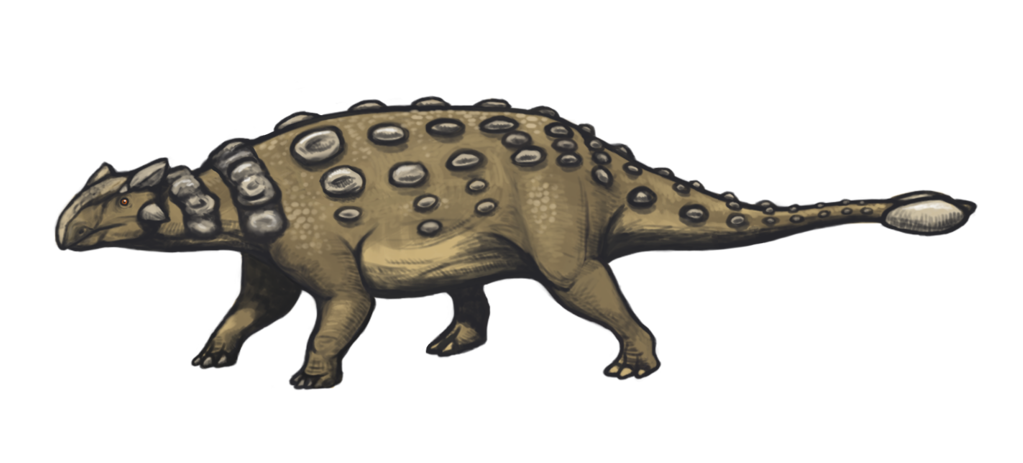
Track evidence has provided intriguing insights into how predators tackled particularly challenging prey, especially heavily armored dinosaurs like ankylosaurs and ceratopsians. Several trackway sites show large theropod prints circling and approaching these defensive specialists from specific angles—suggesting targeted attacks at vulnerable points. A remarkable set of tracks from the Late Cretaceous of Mongolia shows what appears to be a predator repeatedly testing different approach angles around a stationary ankylosaur, whose pivoting tracks indicate it was maintaining a defensive posture with its tail club ready. The predator tracks show experimental positioning, seemingly searching for blind spots or weaknesses. In other cases, tracks indicate group tactics may have been employed against armored prey, with multiple predator trackways converging from different directions—potentially an early version of the coordinated hunting strategies used by modern wolves when tackling dangerous prey like bison or moose.
Scavenging Versus Active Hunting

The long-standing debate about whether certain dinosaurs were primarily hunters or scavengers has found new evidence in track research. Trackways attributed to large theropods like Tyrannosaurus have been found intersecting with already-dead herbivores (identified by stationary, collapsed body impressions surrounded by multiple predator tracks). The pattern of these tracks often shows direct, purposeful approaches rather than the stalking patterns associated with active hunting. However, the same species also left tracks consistent with active predation in other settings, suggesting a flexible approach to feeding. Particularly informative are track sites showing multiple different predator species converging on a single fallen herbivore, indicating a scavenging hierarchy may have existed in dinosaur ecosystems. The evidence increasingly points to most large theropods being opportunistic, capable of both active hunting and scavenging depending on circumstances—similar to modern hyenas or lions.
New Technologies Revealing Hidden Details

Cutting-edge technologies are revolutionizing how scientists analyze dinosaur tracks, revealing previously invisible details about hunting behaviors. Laser scanning and photogrammetry now allow researchers to create sub-millimeter-accurate 3D models of tracks, detecting subtle pressure changes and weight shifts that indicate specific movements. These techniques have revealed evidence of dinosaurs shifting their weight forward during acceleration or redistributing pressure when preparing to turn—details invisible to the naked eye. Particularly groundbreaking has been the application of pressure analysis software, originally developed for human gait studies, to dinosaur tracks. This technology has allowed paleontologists to identify subtle weight shifts consistent with predators lowering their center of gravity during stalking behaviors. Other technological advances include ground-penetrating radar that can detect tracks hidden beneath surface layers and specialized lighting techniques that reveal nearly invisible surface tracks through shadow enhancement.
The Future of Dinosaur Track Research
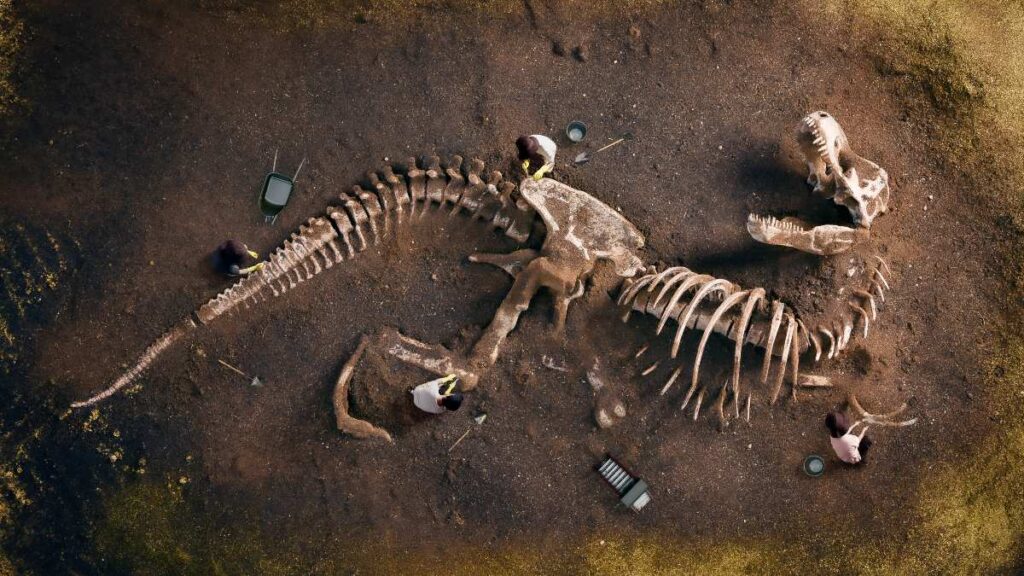
The field of dinosaur track research stands at an exciting frontier, with new discoveries and analytical methods promising to further revolutionize our understanding of prehistoric hunting behaviors. Emerging technologies like AI-powered image recognition are being developed to identify and analyze vast trackway sites more efficiently than human researchers alone could manage. Deep learning algorithms are being trained to recognize patterns in trackways that might indicate specific behaviors or interactions invisible to conventional analysis. Paleontologists are also increasingly combining track evidence with biomechanical models based on skeletal remains, creating comprehensive reconstructions of hunting scenarios that integrate multiple lines of evidence. Citizen science initiatives are expanding as well, with public reporting of track discoveries through mobile applications helping researchers locate new sites across remote regions. As these methods advance, we can expect even more detailed insights into the hunting lives of dinosaurs, potentially revealing behaviors and adaptations that have remained hidden for millions of years.
Conclusion

The study of fossilized dinosaur tracks has fundamentally transformed our understanding of how these ancient predators hunted, revealing a picture far more complex and sophisticated than previously imagined. From the coordinated pack hunting of dromaeosaurs to the terrain-specific adaptations of various theropods, these preserved moments of prehistoric action show dinosaurs as dynamic, intelligent hunters employing strategies remarkably similar to modern predators. What emerges is not the simplistic view of dinosaurs as primitive reptiles, but rather as highly adapted hunters with specialized techniques honed over millions of years of evolution. As technology continues to advance and more trackways are discovered, our window into the hunting behaviors of these magnificent creatures will only widen, further enriching our understanding of Earth’s distant past and the remarkable predators that once ruled it.



